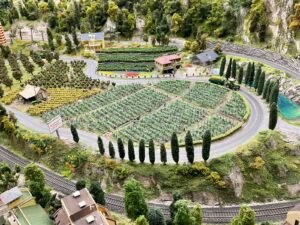Report: do LED lights damage our health?
 Last month, a research team at the Barcelona Institute for Global Health and the University of Exeter published a new study which linked exposure to LED lighting to an increased risk of cancer. It reignited familiar worries about how they can affect our health. Thomas Barrett reports.
Last month, a research team at the Barcelona Institute for Global Health and the University of Exeter published a new study which linked exposure to LED lighting to an increased risk of cancer. It reignited familiar worries about how they can affect our health. Thomas Barrett reports.
The study focused on over 4,000 people largely living in Madrid and Barcelona and drew a link between a large exposure to LED lighting and two forms of cancer.
Their study revealed blue light emitted from the LEDs cause the human body’s circadian rhythm to unbalance, affecting hormone levels and increasing the risk of prostate cancer by 2X and the risk of breast cancer by 1.5X.
Dr Alejandro De Sanchez de Miguel, who led the study, told New Start that although their findings were a huge breakthrough, the public shouldn’t be too quick to draw parallels with UK towns or cities.
‘Compared to UK towns and cities, Madrid and Barcelona have an extremely high population density This can affect the results.’
A recent study from the German Research Centre for Geoscience found a 2.2% increase per year in the Earth’s artificially lit surface, with the study pointing much of the blame at the door of LED lights.
Public Health England has also spoken out against them, warning in April that streetlights installed on British roads could damage people’s eyesight and disrupt their sleep.
John O’Hagan, head of the PHE’s centre for radiation, chemical and environmental hazards, spoke out against installing the lights ‘purely on the basis of energy efficiency and cost’, which he believes could lead to glare and a rise in light pollution.
‘The light spectrum may be enriched in the blue, which may be beneficial for keeping drivers alert, but many people will find the light uncomfortable. High levels of blue light are known to cause damage to the retina in the eye,’ he said.
The research team at the Barcelona Institute for Global Health and the University of Exeter said their findings may also implicate the night-time use of mobile phones and tablets, which also emit blue light, in cancer development.
LED lighting is ‘a double-edged sword,’ according to Dr Sanchez de Miguel, and much more can be done to negate the harmful aspects of them. Early LED products often had poor optical control, meaning light leaked out of them and into bedrooms, but he says technology has moved on from then and is continuing to improve.
‘LED still leak a lot horizontally, same in Spain, also we have to think even if the light is not shining directly in people’s rooms if you put a lot of blue light the ground also reflects. This is very difficult to remove all the blue light by reflection.
‘Many times, the design of the streetlight is good but the installation is not, they should not send any lights upwards but the people who install it have not done it properly.’
Lights out
Glasgow-based EGG Lighting manufacture and distribute LED lights, including those intended for industrial, office, and outdoor purposes.
LEDs can be designed to emit virtually any colour, so it might seem logical to design them so that they emit warmer colours and not the controversial ‘blue light’. However, the cooler, blueish tones tend to be brighter, which is why they are popular as streetlights.
Jennifer Griffith of EGG believes that LEDs have developed a bad reputation because people have not been using them to the best of their ability.
‘It’s not that LED lighting is the issue,’ she says.
‘It’s about the design. For example, in street lighting it’s perfect as it keeps people alert on the roads. But blue lights in residential areas is not the right application. You want red lights and more warmish tones, which you can do with LED lights.
There are alternatives to LED. Genesys is hoping to convince councils that their product, which is a metal-halide lamp, offers a safer alternative to LED streetlights as it doesn’t give off the blue light glare that has been criticised by Public Health England. However, Jennifer hopes that LEDs public image can still improve.
‘It’s the desire to improve efficiency and lower the carbon footprint that has superseded looking at the whole picture. We need to look at the design and the main features and application.’
Jennifer also says there is a misconception that LEDs only can emit the controversial blue light.
‘They are versatile, they can be any colour, people often don’t understand just how much better they are for the environment.
‘In a residential application you should be installing sensors which decrease light pollution, which is better for the community and seeing the stars. If you consider the design and what the application is going to be before installing them, then people won’t have these misconceptions that LED lights are on all the time and keeping people from sleeping.’
In terms of the cancer risk, she’s sceptical and believes that there are several other lifestyle factors at play which can contribute to a disruption in the circadian rhythm, such as having high-stress levels or not getting enough sleep.
‘They have not found a direct link between lighting and cancer. The use of any artificial light can affect our circadian rhythm, but to paint LED’s as the culprit is missing the point of the research and so indirect.’
With Greater London predicted to grow by four million people by 2050, and other towns and cities anticipating similar levels of population growth, the places where we live are only getting brighter. Hopefully, the understanding of how best to utilise LED lighting grows with them.















